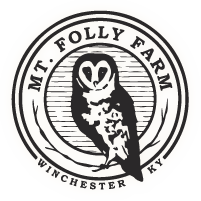Dear Friends,
Fall is here, the silage for our winter feed is up, and our plans turn to harvest, cover crops, complex rotations, grass and soil diversity. Per my last letter, I’ve paid a visit to our friends the Halls, at The Troublesome Creek Times in Hindman, Knott County.* There, I spent an afternoon, delivering supplies and witnessing the wreckage caused by the late July flooding, which left 39 Kentuckians dead and terrific material devastation through towns and hollers.
Scenes from Knott County in early August. Resilient people, ugly problem.
While the trip to Hindman was sobering, on reflection I became even more determined to continue the fight for climate resilient farming, human health, and the health of our local economy. We thank you for supporting us and passing the word along.
The recently- published What Your Food Ate: How to Heal our Land and Reclaim your Health, by McArthur-winning scientist and author David Montgomery and his biologist wife Anne Bikle’ does a breath-taking job of assembling facts and stories about the relationship between the land and our health.
The bottom-line message is that plants have a half-a billion-year track record of success in the wild, both defensively and offensively, one that reliance on pesticides and herbicides diminishes. Therefore wild- crafted herbs, organic crops grown in living soils (including Homestead Alternative Hemp products, and our soon-to-be introduced herbal line, made from plants gathered from their natural environment, and the grits and cornmeal I’ll start milling later this fall) have superior phytochemicals and mineral micronutrients.
Our plants and crops are grown in organic soils, not fed chemical fertilizers as if on an IV. This makes them tougher, and better for you!
For ruminant animals, such as cattle, goats, sheep, something similar holds true as they convert plants into meat. Grass-fed meat has more omega 3 fats, and fewer omega 6 fats, because diverse grasses have more omega 3s. Feedlot corn, soy and wheat – all plant seeds – are full of omega 6s, intended to feed the young plant as it emerges. Though some Omega-6 fats belong in our diet, in the ratios we Americans and our cattle now eat them, these seed fats are inflammatory and contribute to ill health.
At Mt. Folly, we raise our beef cattle outside on grass. Yet at the grocery store, grass-fed beef and lamb is hard to find, as the organic label does not mean that the animals have been raised on diverse pastures, but usually means they have been confined inside and fed certified organic feed, mostly corn and soy.
When these confinement rations are fed to the beef cattle, dairy cattle, sheep or goats, and then we humans drink the milk or eat the meat, we too are eating a “ration” made for industrial farming rather than in nature. So, choosing product from a company with integrity and transparency is the only way to be sure….
And, it turns out cattle raised on pasture using management intensive grazing methods put more organic matter in the soil than they belch greenhouse gas, the belching a result of the fermentation process which allows them to digest cellulose, their natural niche.
For transparency, book a trip to the Homestead Log Cabin, where you have the absolute run on the farm, no holes barred. The Historic Farmhouse at Mt. Folly Farm – Mt. Folly Farm (mtfollyfarm.com). Folks really get a kick out of the barrels of whiskey aging in tobacco barns. Or get together a group of 15 or more and email me for a farm tour. Mt. Folly Farm Tours – Mt. Folly Farm (mtfollyfarm.com


